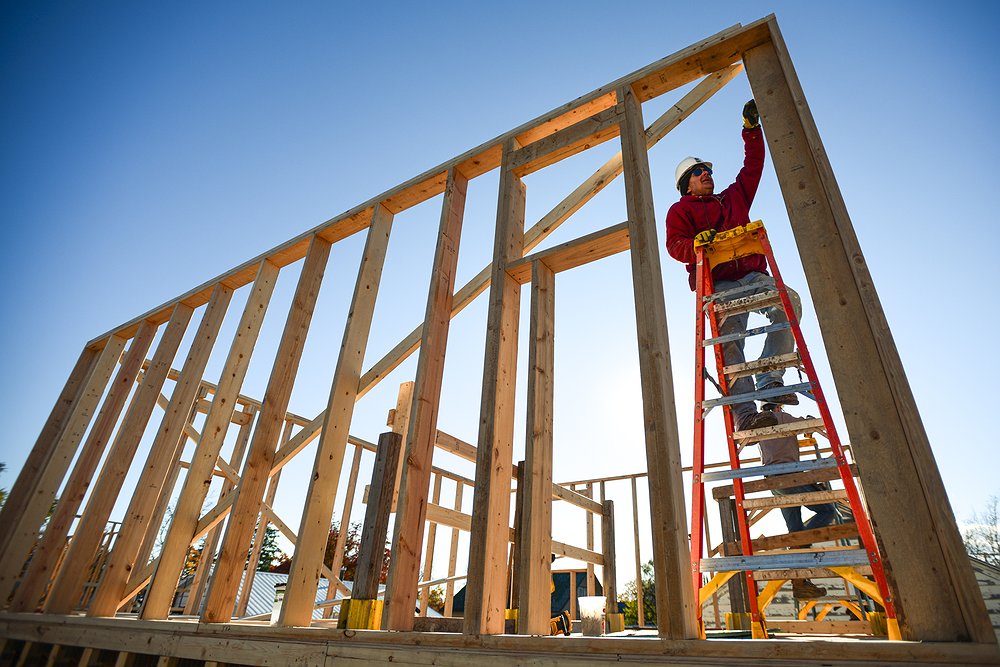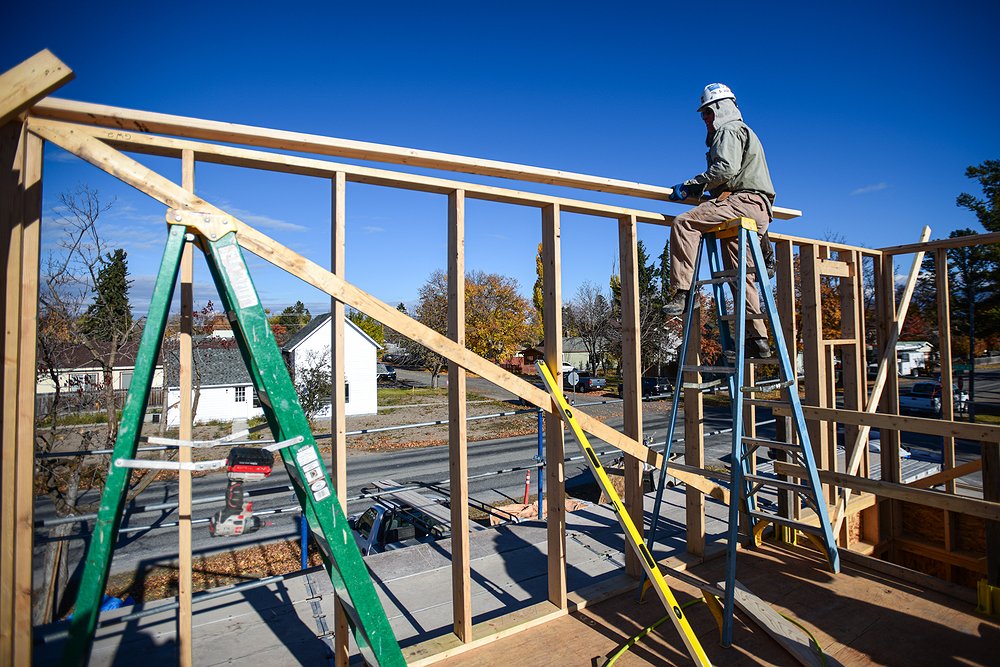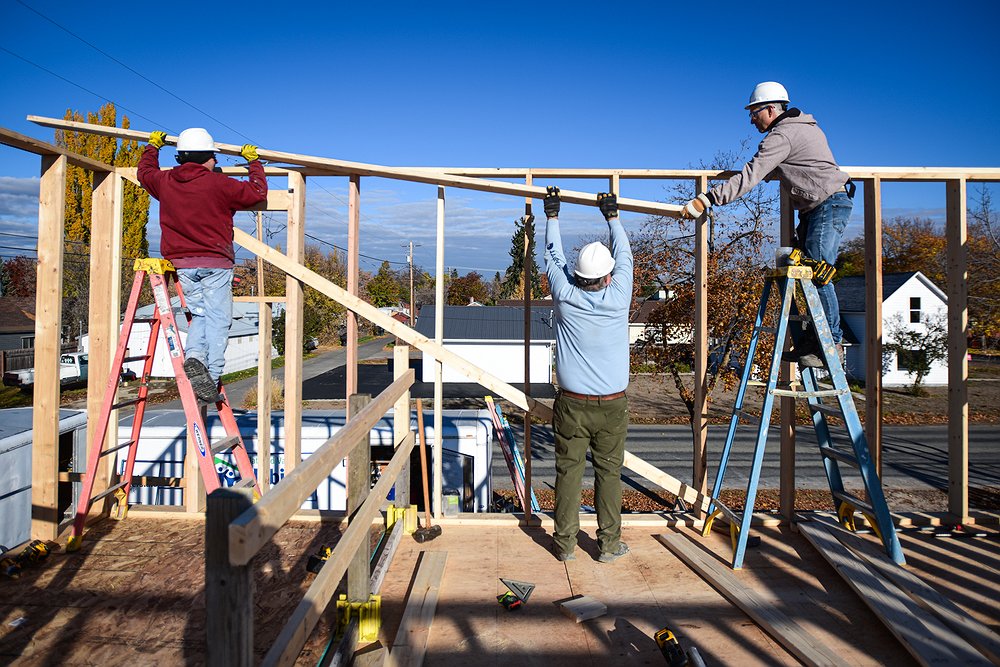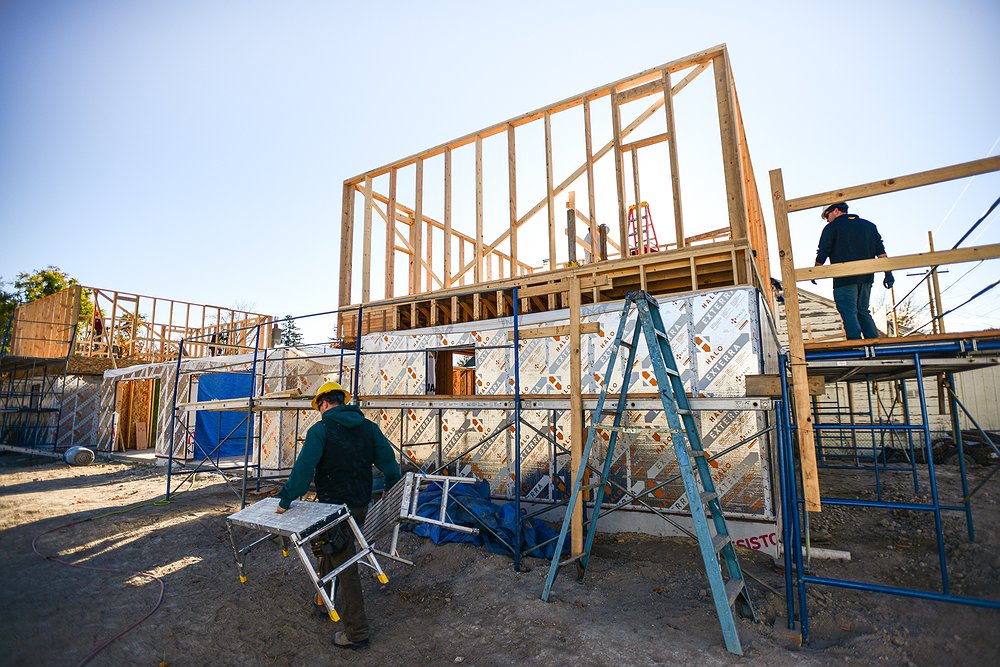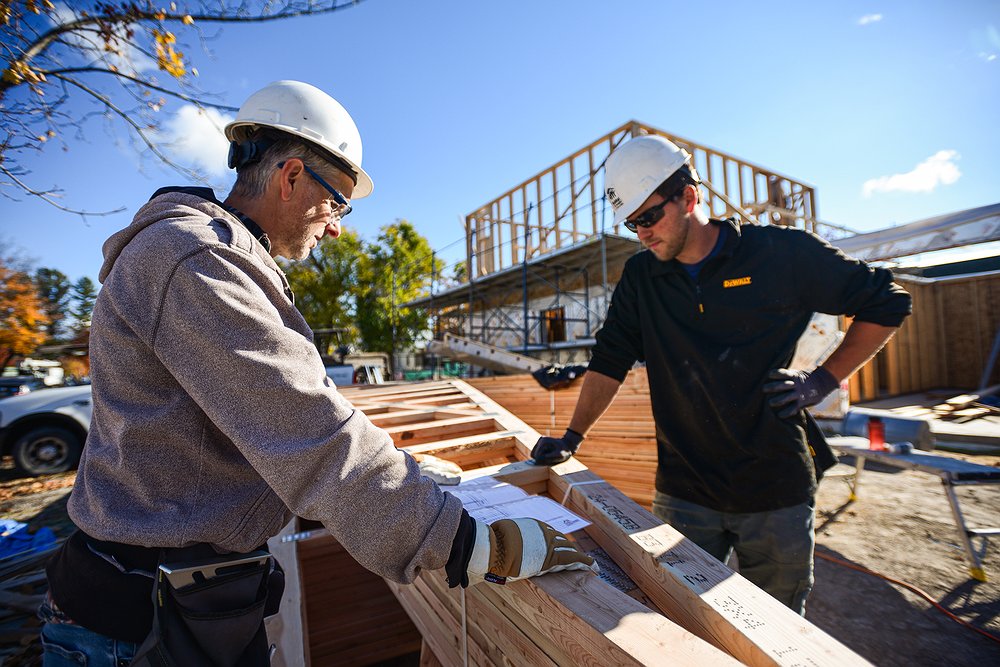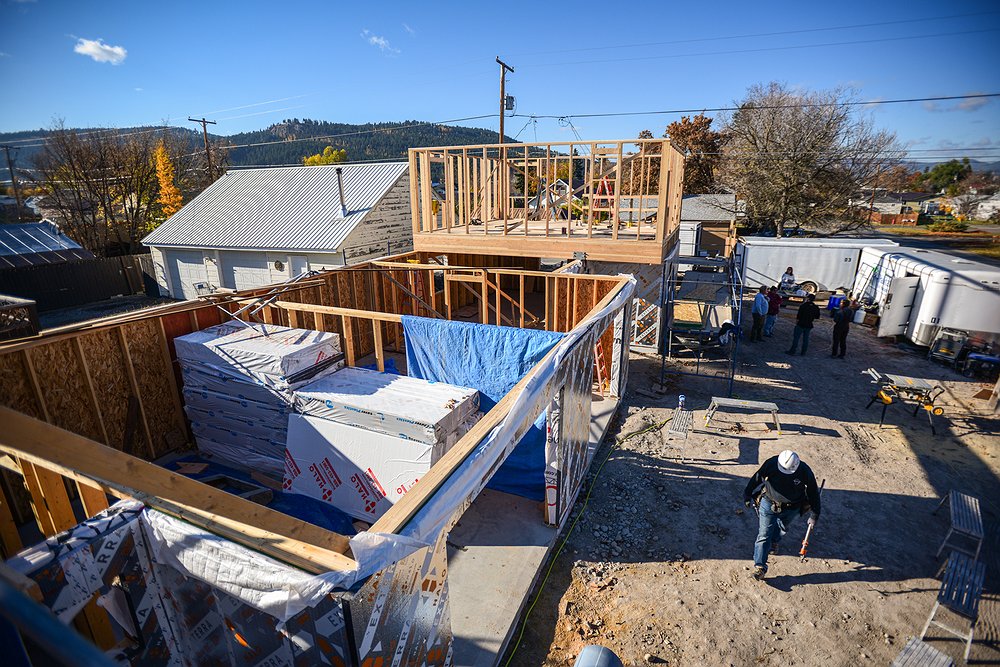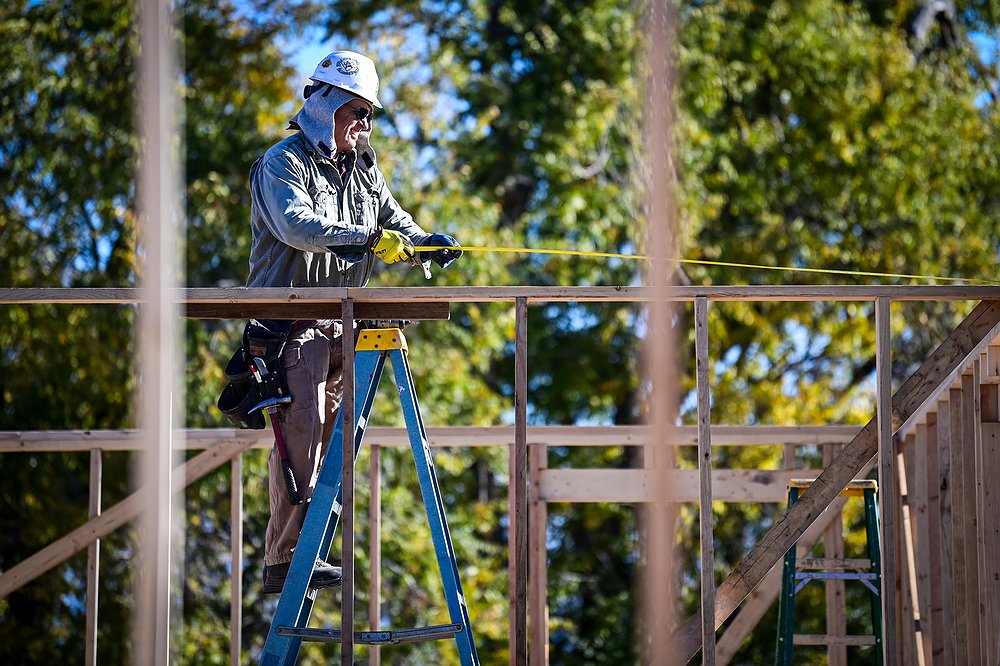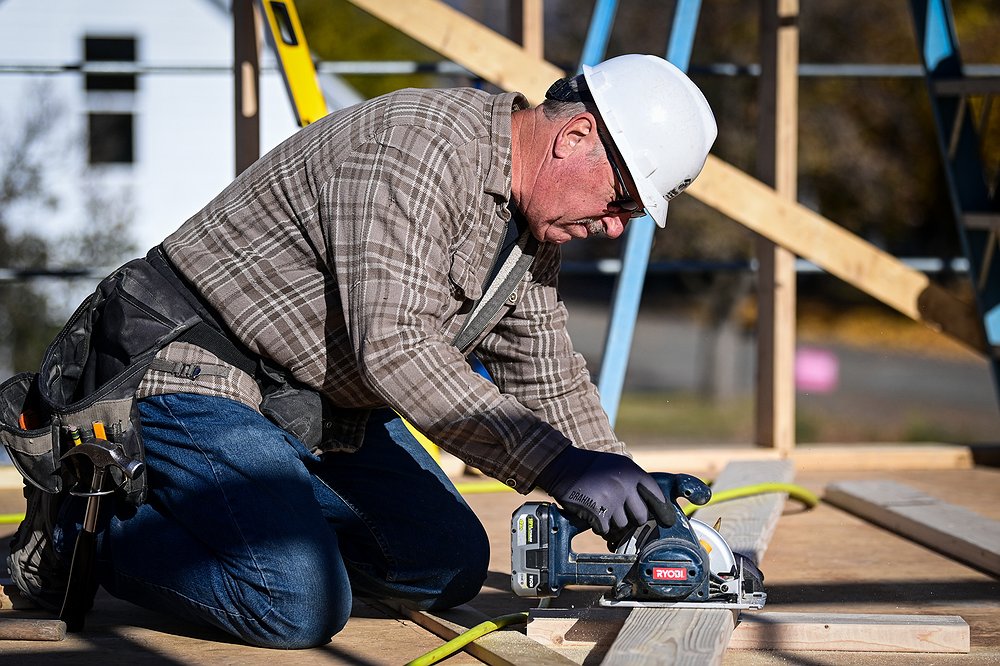Habitat Flathead volunteers build a future for those in need of housing
I am not a handyman, but I wish I was.
I’ve used power tools before, but not nearly enough as I’d like. I knew before getting to the build site that once I got to work, that sad truth would come out.
I arrived at the corner of Seventh Street and Ninth Avenue West in Kalispell at 8 a.m., the day before Halloween. I was supposed to show up 10 minutes earlier, but it took longer than expected to overdress with five warm layers.
There, Habitat for Humanity of Flathead Valley volunteers have been building two duplex-style townhouses fitted with two bedrooms, one-and-a-half bathrooms and conjoining garages. The land the soon-to-be-homes reside on is owned by nonprofit Northwest Community Land Trust, which aided in lowering the housing cost to under $300,000.
Habitat Flathead has built 70 homes to date and is now pumping out four to five houses a year, with this one that started around three months ago expected to be completed in the spring. The organization provides homeownership opportunities to low-income, first-time buyers.
What I would come to learn during my day volunteering is that the others with me have grown to be friends after building houses for free in the valley for years, some upwards of a decade. Many, like me, joined without any experience in construction.
Signing up was much easier than I expected. I emailed Programs Manager Hilary Devlin and within a day I was on the schedule.
She sent along an infographic outlining the general plan for the day. Wear sturdy shoes, not sandals. Bring a water bottle. There’d be lunch provided, and site clean-up is at 3 p.m.
I still had no idea what we’d be building, who’d be there, and how I, with my non-skilled hands, would be of any help.
I arrived while everyone was warming up in front of a gas heater. Seven volunteers, including me, and three project managers.
Construction Supervisor Stetson Jore fitted me with a work belt, a hot pink hard hat, safety glasses and a power drill. The work belt came with everything I guess I ended up needing; a tape measure, pencil, nails and screws. There was nowhere to put my reporter’s notebook, so I stuffed it in my Carhartt jacket pocket that hadn’t seen a speck of sawdust in its life.
Garrett Roberson, the construction manager, said the focus today was on the second floor of one of the houses, which was wall-less. The first floors were already framed and insulated.
Following Jore up the scaffolding, me and four other volunteers made our way to the walls that were resting on the second floor. Together, we hoisted each wall up, drilling it to the floor.
Because the lumber only stretched to 16 feet, less than the length of the room, some walls were in two pieces and had to be reinforced by drilling another plank of wood to the top, what Brian Putnam called double plating.
Putnam retired from being a mechanical engineer around three years ago and has since been volunteering for Habitat Flathead.
His first project was a nearly built house in Lakeside, where Roberson put him on the roof his first day.
“I had no idea what I was really doing but essentially you get up there and screw stuff together,” with guidance from the project managers, he said.
“[Garrett] kind of knows where everybody’s strong points are,” he added. Meaning Putnam is assigned tasks requiring an engineer’s logic.
For Bill Rubly, 64, volunteering is a way of giving back to the community while gaining valuable skills. “It’s a two-way street,” he said.
“Our old site supervisor used to say we’re a bunch of old, retired guys whose wives throw them out two days a week and we can either go to the bars or we can come here,” he said.
There are usually around 12 volunteers on any given day, Devlin said, adding that while there are younger volunteers, she’d love to see more. The summer sees caravanners, who come from Habitat International to help build.
Up on the second floor with me helping drill down the walls was Jim Poplin, 69, who has been volunteering for the last nine years.
A retired geologist, Poplin, said he joined to help people and ease a housing crunch felt city and statewide.
“We’re not going to eliminate the housing shortage around here, I recognize that,” he said.
A day of drilling and nailing was halted when lunch time hit. Kim Rubly, the community engagement coordinator and Bill Rubly’s wife, brought donated homemade sloppy joes that I devoured chatting with my newfound friends.
Devlin finds the breaks beneficial.
“It gives everyone a chance to kind of sit down and talk with each other and become friends and learn from each other,” she said.
Lunch also gives time for the homeowners to meet those building their house. Habitat Flathead homeowners must log 275 hours of sweat equity.
After lunch, I applied sheathing for much of the remainder of the day. Using an air nail gun for the first time, I stapled oriented strand board to the wall frames. Construction lead Isabella Schenone helped me apply the sheets that add a level of protection and insulation to the home.
Bruce Freeman was applying sheathing on the twin townhouse across from me. He’d been building with Habitat Flathead for almost 10 years. Freeman, a retired cop, said he returned from a trip to Hawaii “about 30 pounds overweight” and got inspired by an article about Jimmy Carter, the 39th President of the United States.
Carter, who turned 100 years old on Oct. 1, became an active volunteer with Habitat for Humanity in the 1980s and co-founded the Carter Work Project with his wife Rosalynn Carter. The organization partners with Habitat for Humanity to rally volunteers every year to participate in a building blitz, constructing houses across the country.
Over the span of seven hours, I used four power tools, learned several building tips and got to know 10 people looking for community and to help it too.
I left with sore arms and the satisfaction of spending the day outside among friendly people. I may volunteer again.
Reporter Jack Underhill can be reached at junderhill@dailyinterlake.com and 758-4407.
 Volunteer Bill Rubly cuts boards for the second-floor wall frame of a duplex-style townhouse being built by Habitat for Humanity of Flathead Valley and Northwest Community Land Trust in Kalispell on Wednesday, Oct. 30. With Rubly are fellow volunteers Brian Putnam and Jim Poplin. (Casey Kreider/Daily Inter Lake)
Volunteer Bill Rubly cuts boards for the second-floor wall frame of a duplex-style townhouse being built by Habitat for Humanity of Flathead Valley and Northwest Community Land Trust in Kalispell on Wednesday, Oct. 30. With Rubly are fellow volunteers Brian Putnam and Jim Poplin. (Casey Kreider/Daily Inter Lake)











